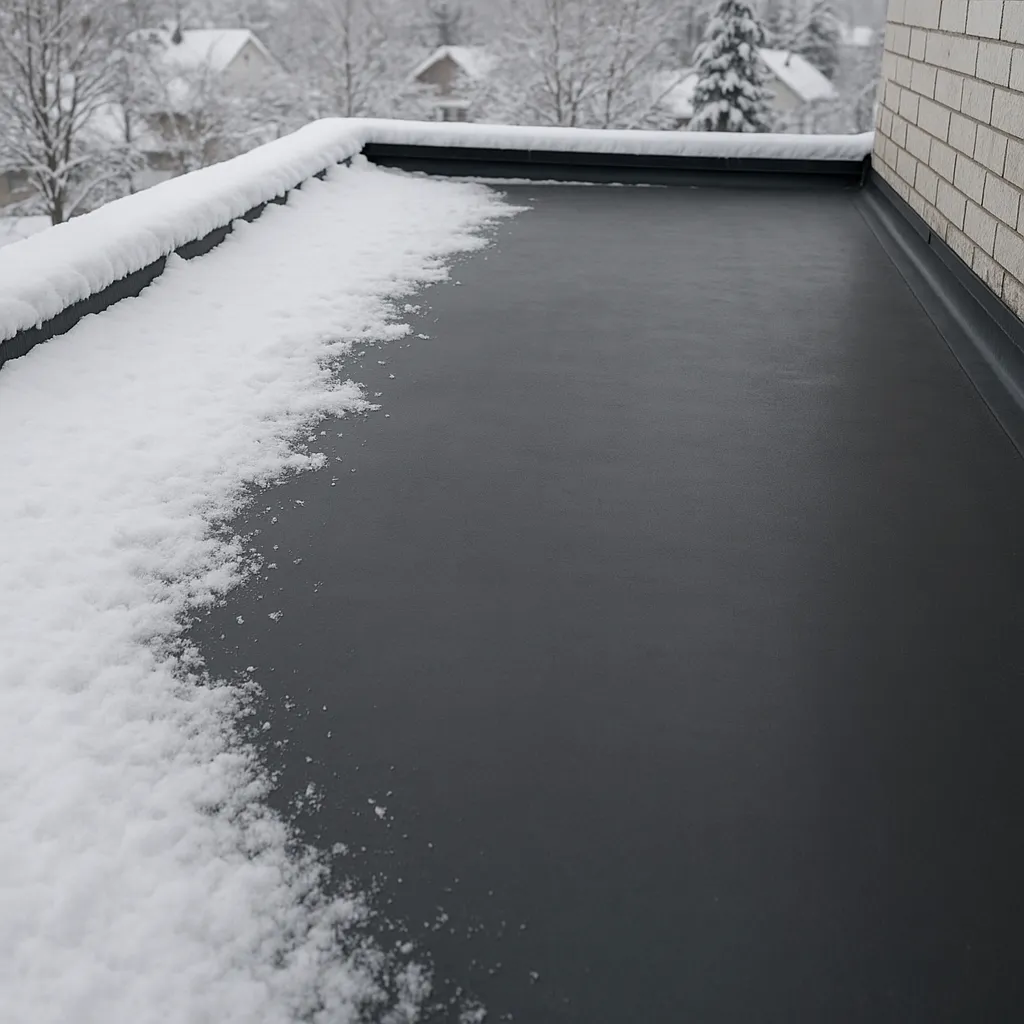
Flat Roofs in Winter: Common Problems and Solutions
Flat Roofs in Winter: Common Problems and Solutions
How to Protect Low-Slope Roofs from Ice, Leaks, and Collapse
Flat and low-slope roofs require a different kind of care—especially in winter. Without proper pitch, they’re more vulnerable to pooling water, snow buildup, and slow drainage, making them prone to leaks and structural strain.
Here’s how to protect your flat roof when the cold hits.
💧 Standing Water After Snowmelt
Unlike pitched roofs, flat systems often hold water unless properly drained. After snow melts:
Water pools on the surface
Freezing temps refreeze it overnight
Ice forms, adding weight and blocking drainage
This leads to premature membrane wear and water infiltration.
🧊 Ice Dams Can Still Form
Even without eaves, ice dams can occur around:
Roof edges
Vent pipes
Drain outlets
If water can’t escape, it backs up under seams—especially on older modified bitumen or tar-and-gravel systems.
🧱 Watch for Load Stress
Heavy snow accumulation poses a major risk on flat roofs. If left unchecked, you could face:
Cracked rafters
Decking collapse
Leaks into HVAC or interior ceiling spaces
Regular snow removal is critical—especially for commercial buildings.
🛠️ Best Solutions for Flat Roofs
✔️ Keep drains and scuppers clear of ice and debris
✔️ Inspect seams and flashing before winter hits
✔️ Apply cold-weather-safe sealants if needed
✔️ Consider upgrading to TPO or EPDM for better winter flexibility
📞 Need help with a flat roof in winter?
Call Twin Bridge Roofing and Construction at (563) 655-4902
🌐 Learn more at www.roofqc.com
Low slope doesn’t mean low maintenance—stay ahead of winter problems.